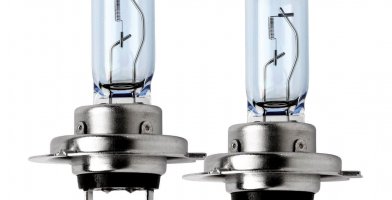10 Best Gas Leak Detectors Reviewed & Rated
The U.S.A consumes a mindboggling 27 quadrillion cubic feet of gas annually, and though it seems like an immense value at first, it makes sense considering all we do with gas. We use natural gas to produce power, heat our home and heat water seeing as natural gas water heaters are some of the best in the market. However, though the benefits are abundant natural gas is also dangerous.
Between 2007 and 2011, the U.S fire departments responded to about 51,600 fires annually caused by flammable gas. These fires resulted in 168 civilian deaths and property losses to the tune of $644 million. Most of these fires could have been prevented were it not for the misconception that you can smell the gas leaks. Natural gas is odorless, and the distinct smell is a chemical that vendors add. However, with a gas leak detector, you can identify gas leaks and mend your pipes in time.
Our Top 3 Picks
[srpshortcode id=”21877″][/srpshortcode][srpshortcode id=”21878″][/srpshortcode][srpshortcode id=”21880″][/srpshortcode]
A gas leak detector is useful for both industrial uses and homes. Industrial gas detectors pick minute gas leaks or any fluctuations in pressure levels while they check the presence of one or two gases at home. Gas leak detectors are typically complex tools and use semi-conductor sensors that help identify a gas and the exact area. They are visual units but include an auditory system that buzzes when there is a leak.
Gas detectors are also used to identify a leak, and to ensure there are no leaks. Ensure you expose the sensor to a previously known gas concentration to tell whether the device is working. A challenge test is also recommended as only then can you know if it is of use. However, with the many units in the market, picking a quality gadget could be a challenge. However, below is a buying guide and our recommendations.
10 Best Gas Leak Detectors
1. UEi Test Instruments CD100A
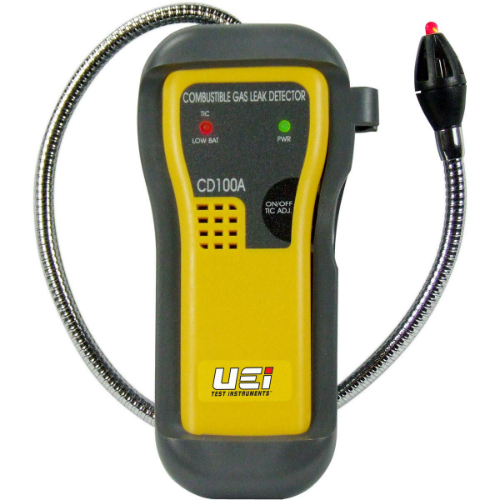
Another fascinating feature of the UEI CD100A is the ease of use as it allows one-handed operation. It has an 18-inch gooseneck that will enable you to get into tight spots, and the sensor has a tip light for illuminating your work area. The power indicator light will turn green whenever you turn the device on and red if the batteries are low. The gadget uses a 9V battery with a separate battery compartment so replacing is a breeze. Furthermore, you can work in congested areas thanks to the earphone jack. However, our top features were the quality and adjustable tic rate.
Quality – The UEI CD100A is durable, and you can expect it to last. First, it includes a solid semiconductor indicator for instantaneous detection. Moreover, it has a sensor cover and a ruggedized rubber boot for protection.
Tic rate – The tic rate is adjustable thanks to the side knob, and it will accelerate as you approach a leak. The acceleration allows you to know the direction of a seep.
1-year warranty
18-inch gooseneck
Minimum detection: 50ppm methane
Who is it for?
The UEI is excellent for persons looking for a unit that will detect several combustible gases. It is also great for professionals.
It is reasonably-priced given the quality of the tool
It is lightweight, and thus it is easy to use
It is versatile as it can detect an extensive range of combustible gases
It has excellent results and locating leaks will be simple enough
It is expensive to repair once the warranty has run out
2. SGILE Gas
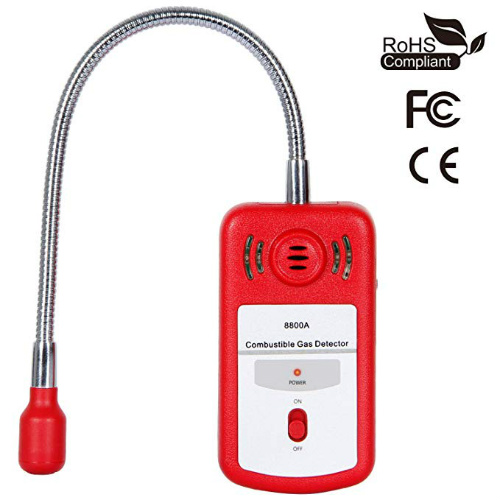
The SGILE can detect a broad range of combustible gases from hydrocarbon gases, i.e., methane, butane, and propane to alcohol, that is methanol and ethanol. Other than the versatility, the SGILE is a bright red unit, so it is easy to spot should you misplace it in a job site.
The gadget needs 30-seconds of warm-up time, but this should not be much of a concern. Another fascinating feature of the SGILE is the alarm. It includes a visual and audible alarm. However, our best features were sensitivity and affordability.
Affordable – One thing that makes the SGILE such a success is that it is a low-cost unit as it is a fraction of the cost of other devices on this list. However, there is nothing cheap about this product as it includes all the requisite components to sense combustible gas.
Sensitivity – The sensitivity of the SGILE is better than that of our top pick despite it being cheaper. It can detect gas as low as 5ppm, and it happens to be adjustable to your preferred level. It can operate in the harshest conditions, and it is a perfect pick for any household.
Weight: 8.8 ounces
Sensitivity: As low as 5ppm
Probe length: 12-inches
30 seconds warm-up time
Who is it for?
Seeing as it is an affordable device, we recommend it for anyone on a budget and homeowners. However, it is versatile enough to function in mining and coal industries.
It is affordable
Calibrating it is simple enough as all that is needed is to stand outside for 30 seconds
Though it is supposed to be an instantaneous sensor, it takes around 15 seconds to detect a leak
3. Amprobe GSD600
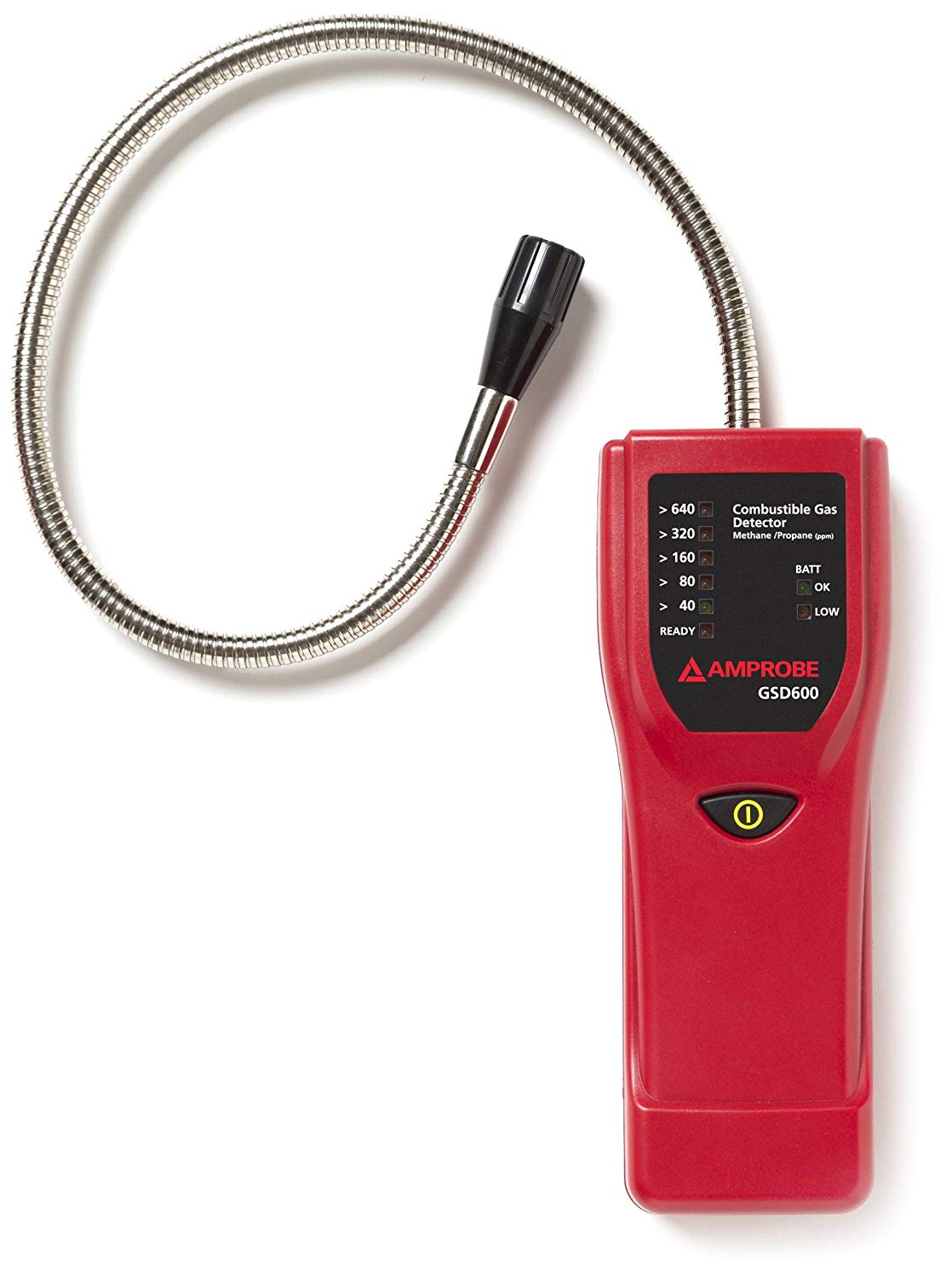
The Amprobe requires a 60-seconds warm up to calibrate for accuracy. Therefore ensure you are in an area (outside) where there is no likelihood of a gas leak for it to calibrate correctly. The response time of the unit is 10 seconds, and the audible warning system will beep faster as the concentration of the gas increases. The buzzer allows you to locate a leak with ease. However, it includes a visual warning system but more on that later.
Another remarkable feature of the Amprobe is the low power indicator that will alert you when you are low on power. Also, it includes an auto power-off feature that will shut down the device after 10 minutes to conserve the batteries.
Visual display – One of the Amprobe’s strong points is the display panel with LEDs that indicate the concentration of methane or propane. They are useful for identifying if a threshold has been crossed and danger involved.
Audio buzzer – The audio beeper is a standard on gas leak detectors, but the Amprobe includes a mute button for areas where silence is paramount. It also includes an earphone jack allowing you to work in congested areas.
Power: batteries
Probe: 17.6-inches long
5 Level LED alarm
Sensitivity: As low as 40ppm
Who is it for?
The GSD600 is designed for detecting methane and propane gas. Therefore it is outstanding for home use especially HVAC appliances.
It is sensitive detecting small leaks between 40 and 80ppm
It includes a handy carrying case for more comfortable transportation
You can detect natural gas though it is designed for propane and methane
The Amprobe is not a field grade detector
It is pricey and non-repairable
4. RIDGID 36163 Model micro CD-100
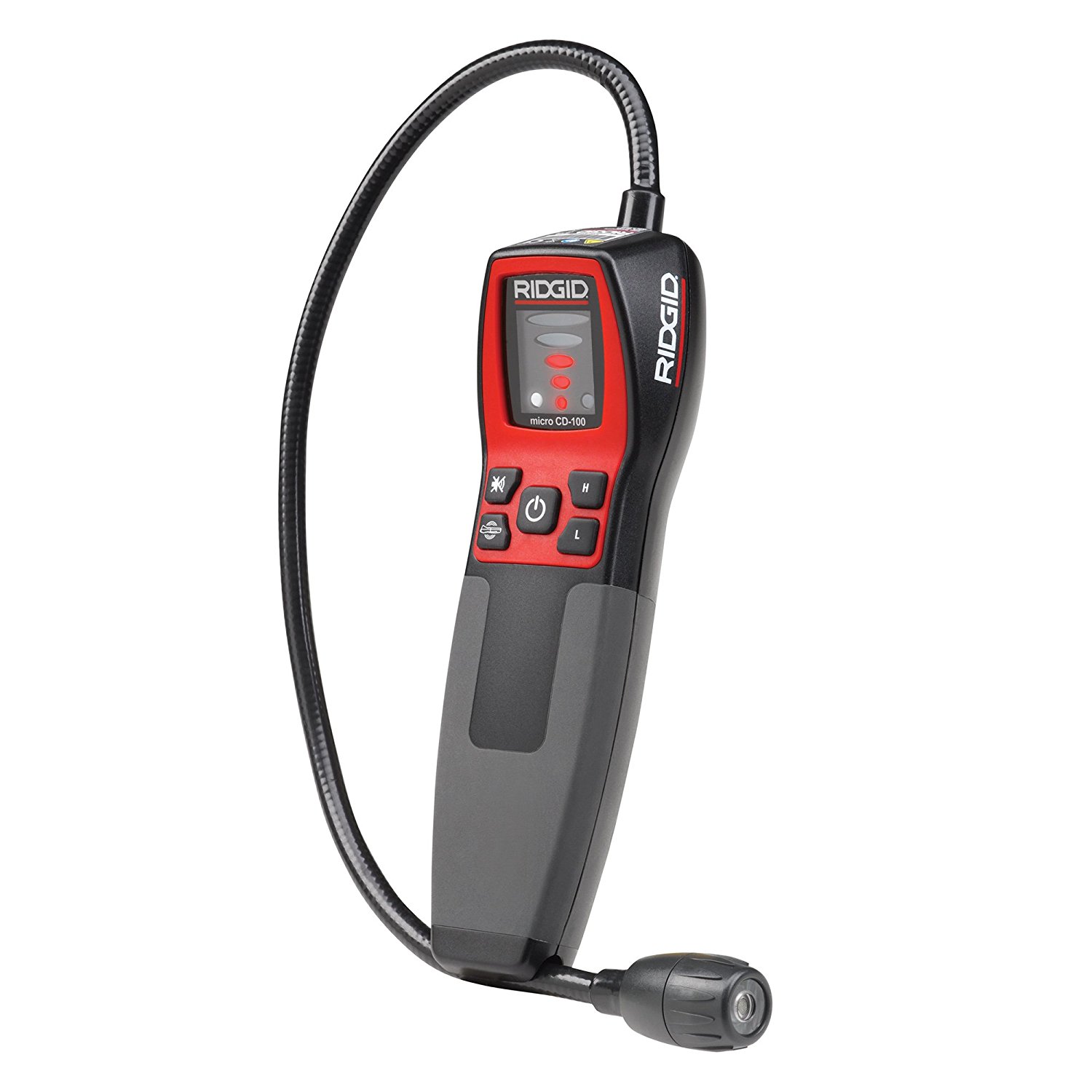
The Ridgid 36163 has a 16-inch probe that enables you to get into tight spots with ease, and it flexible for hard to reach areas. Another exciting feature is the response time. Though it is not instantaneous, it takes less than 2 seconds to detect the presence of a gas. And speaking of gas, the Ridgid detects about 15 gases giving it a versatility advantage over other detectors. The warm-up time of the device is less than 5o seconds, and you should be outside when calibrating it.
Sensitivity – You can toggle the sensitivity of the tool between high and low. The high sensitivity allows it to detect gas as low as 40ppm upwards to 640ppm. The low sensitivity detects gas between 400ppm and 6400ppm.
Tri-mode detection functionality – With the Ridgid 36163, you can choose one of three ways to detect the gas. You have the five red LEDs that will tell the gas levels, an audible warning system that will alert you in and has a continuous modulation proportional to the gas allowing you to ascertain the point of leakage, and finally the standard vibration; the latter will enable you to work in areas where silence is paramount.
Sensitivity range: 40ppm to 6400ppm
Probe: 16-inches long.
Weight: 16 ounces
Five red LEDs
Who is it for?
Seeing as the Ridgid 36163 is versatile and can detect an extensive range of gases, we recommend it for professionals who will make the most of this versatility.
It is a high-quality product, and you can expect it to last
Response time is almost instantaneous
You can mute the audio alert when working in areas where silence is paramount
It is audible at 85db
It takes long to calibrate and might be a drawback for professionals
5. MSA 10107602 ALTAIR 4X
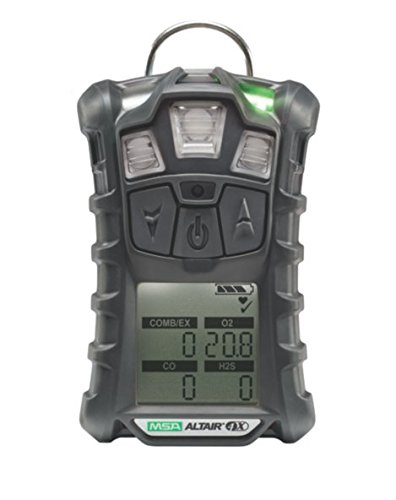
One fantastic feature of the Altair 4X is the data and event logging which is ideal when taking readings in areas where you cannot see the display. You will also appreciate the audible, visual, and vibration alarms. The latter is fantastic when checking gas levels in areas where silence is vital. You will also enjoy the signal stability and repeatability even in changing conditions. The device needs 60-seconds for calibration but has a bump test of fewer than 15 seconds.
Construction – The MSA Altair 4X is like no other gas-leak detector. First, it is ergonomic and will comfortably in your palm. Moreover, it is designed for one hand use, and it happens to be quite durable withstanding a 20-foot drop. The display is bright, so it is easy to take readings, and it has large buttons.
MotionAlert and InstantAlert – These are exclusive features of the MSA Altair 4X and increase the safety of the users. The MotionAlert will activate once a user is disabled or becomes motionless alerting others of his location. The InstantAlert, on the other hand, allows you to warn others of hazardous areas.
Warranty: 3-years
60-second calibration time
IP67 certified
Who is it for?
We recommend the Altair 4X for industrial and first responder applications. It is also ideal for working in confined spaces thanks to the MotionAlert and InstantAlert.
It is easy to use even when wearing gloves
It is accurate and stable
It is less susceptible to RF interference
It includes a glow in the dark option
It has a 3-year warranty
One shortcoming of the Altair 4X is it is quite pricey
6. TPI 725 Pen Style Detector

You will also appreciate how fast this unit is with instantaneous response time, but also a short 10-second warm-up time. However, our best features were the auto zero, and the compact built.
Compact – The TPI 725 is a small and lightweight unit that you can carry around with relative ease. It also includes a pocket clip on the back for instances where your hands are full, or you don’t need it.
Auto Zero – The TPI 725 allows you to zero out so that the unit reacts to an increase in the concentration of the gas. This feature allows you to zero in on the leakage with relative ease.
3-year warranty
Dimensions: 5 * 1-3/8 * ¾-inches
Warm-up time: 3 to 10 seconds
Sensitivity range: 40ppm to 1000ppm.
Weight: 1.76 ounces
Working temp: 32 to 104 °F
Who is it for?
The TP1 725 is best for home use or as a backup for professionals.
It is quite affordable
It is compact and easy to use
It has a lengthy warranty
There are instances the warm-up time is longer than stated
7. EG Air Propane / Natural Gas Detector
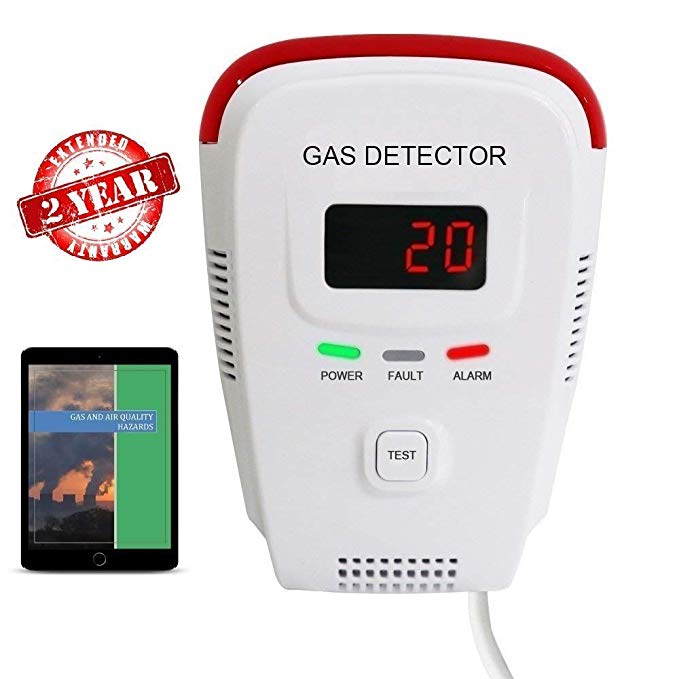
The unit includes both a visual and audio warning system. It also includes a power light for when the device is working appropriately, and a fault light in the likelihood that it is damaged. It also includes a self-test button that makes it easy to monitor the functionality and effectiveness of the gadget.
You will appreciate that it is a green unit. It consumes less than 3-watts of power and lowers your gas bill as it prevents people from leaving a stove on. However, our best features were quality and display.
Quality – The EG Air detector is durable as it is made of ABS plastic and it anti-pest, anti-corrosive, and anti-mildew.
Display – The EG Air measures and displays gas concentration on the display. The intensity is measured in percentage from 0% to 20% LEL (lower explosive limit). The alarms will go off once combustible gases reach 5%. The 5% prevents false alarms, and thus you should not be distressed if you can smell the gas before the device goes off.
Power: 3-watts
0% to 20% LEL
Siren: 80db
Who is it for?
The EG Air is for use in campers and households to protect you from the likelihood of a leak.
TIP: Installation will depend on the type of gas you have. Install it on the ceiling if you deal with natural gas and near the floor if you deal with propane.
It is affordable
It has a lengthy warranty
It works for something so affordable
It is an electric unit and does not have a battery backup, and thus it will not protect your house in the event of a blackout
8. Amgaze Combustible Detector
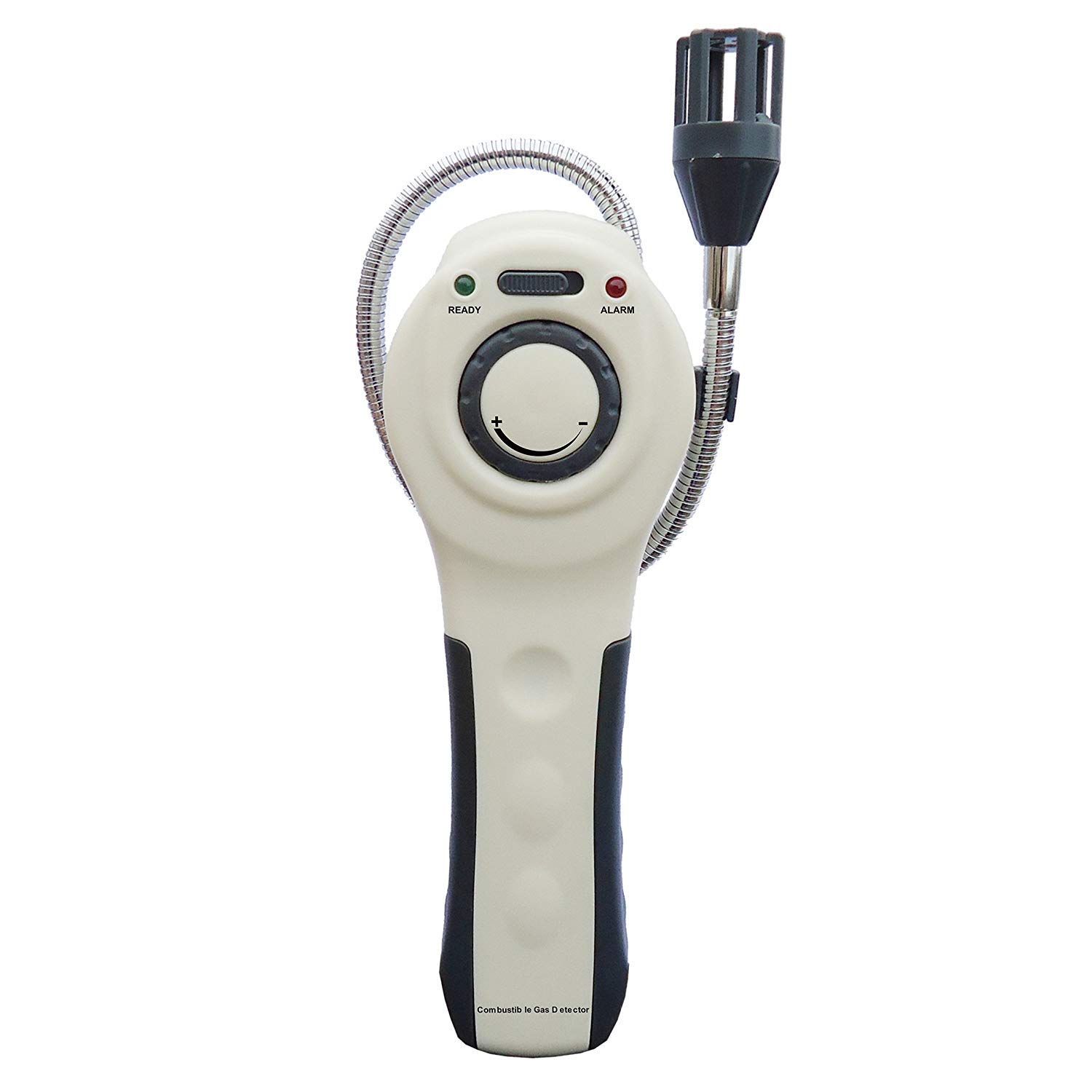
Design – The Amgaze is made for one-handed design. It is slim and ergonomic, so it seats comfortably in your hand. It also happens to be lightweight allowing you to work extended hours with ease.
Low battery indicator – The Amgaze allows for 8 hours of continuous use but includes a low battery indicator to avoid the rude shock of a dead battery.
You will also appreciate the sound and visual alerts that grow sharper with gas concentration.
Probe length: 16-inches
60 seconds warm-up time
Sensitivity: 50ppm
Eight hours of continuous operation
Who is it for?
Given the extensive range of gases the Amgaze can detect, we recommend it for technicians. It can be used by HVAC experts as well.
It is affordable
It is easy to use
The response time is almost instantaneous
The sensitivity is a bit high, and it takes longer to calibrate
9. Fieldpiece Heated Diode Refrigerant Leak Detector
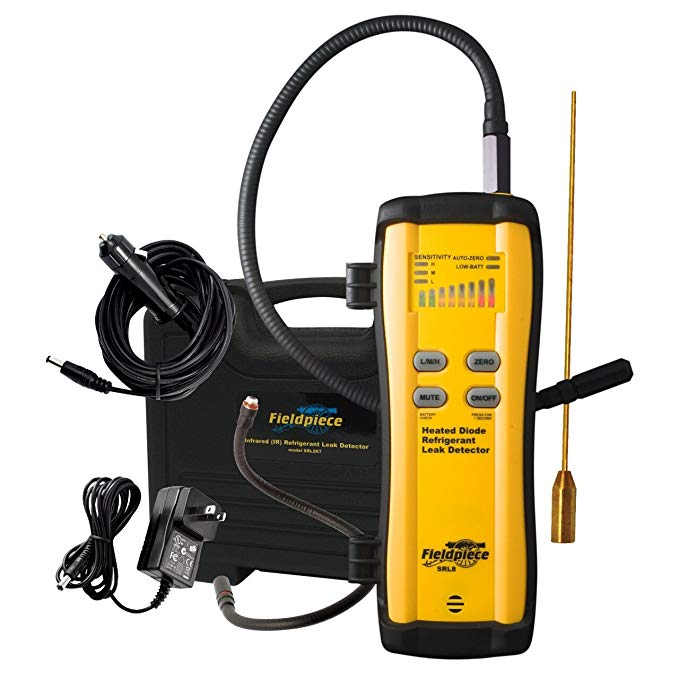
Another fabulous feature of the SRL8 is the sensor and the sensor probe. The sensor probe is made of non-conductive material increasing safety. The kit also includes a 9-inch extension and a 9-inch wand for those tight spots. You will also appreciate the ergonomic design of the unit as it increases comfort, and allows for one-hand operation.
The SRL8 includes a strong magnet on the back for hands-free operation. However, our best features were the batteries and the auto-zero.
Battery – The SRL8 batteries are rechargeable, and thus it saves you the cost of having to invest in new cells. Also, the kit includes a wall charger and a car charger for when you are on the move. Finally, they will last 15 hours or two days of continuous use.
Auto-zero – The FieldPiece auto-zeros every 2 seconds, so it is easier to trace the leaks.
15 hrs rechargeable batteries
3-sensitivity levels
Sensitivity: 0.1 ounces/yr
Weight: 3.75 pounds
30 seconds warm-up time
Who is it for?
The FieldPiece SLR8 is designed for HVACR experts, and to test for refrigerant gas.
It has three sensitivity levels: low, medium, and high
It has both visual and mutable audio alarms for when you are working in areas where silent is paramount
Includes a filter system that protects the sensor from contaminants
It includes a case, so it is simple to transport and store
Includes a battery indicator to alert you when it is running low
It is pricey at several times the cost of some units on this list
10. Kidde COEG-3
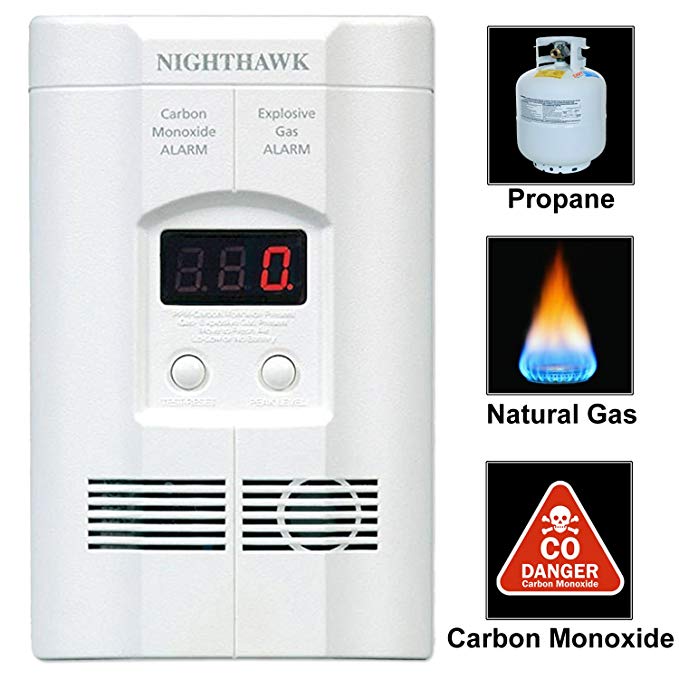
The Kidde COEG-3 is also fascinating in that it is affordable. It is a fraction of the cost of our previous unit, but that doesn’t make it a low-cost gadget. Another feature that will pique your interest is the sound alarm. It includes an 85db alarm which is enough to alert everyone in the household.
Tip: Remember to install the unit high if your house is residence is connected to natural gas, and low if it is connected to propane.
Back-up battery – The COEG-3 includes 9V batteries for those instances when there is a power outage. Thus your house is always protected.
Digital display – Our top feature of the Kidde COEG-3 is the digital display that does more than show the gas level in your house. It also displays the peak level memory, i.e., the highest CO or combustible gas detected.
Moreover, the Kidde has a test button that allows you to check if the unit is functioning. There is
also a reset button to clear all readings.
Alarm: 85db
Three mounting options
9V battery
Who is it for?
The COEG-3 is for home use. If you are on the hunt for a combustible gas detector, you might as well get one that detects CO as well.
They are affordable
Installation is a breeze especially in homes that work with propane gas as all that is needed is to plug them to an outlet
The alarm is audible throughout the house
Rated for 10-years lifetime
They burn through 9-volt batteries pretty fast increasing your bill
There are instances where they did not detect gas
Gas Detectors Selection Criteria
- Gas type – Though LPG, propane, and natural gas are the most common petroleum products in most households; there are instances where you find methane, CH4, coal gas, and butane. Also, there is rarely a one size fits all gas detector and you need a unit that is compatible with the petroleum product in your house or industry.
- Power indicator – Most gas leak devices are battery powered. This is advantageous in that you do not run the risk of it dying on you, and they are cheap to run. However, ensure that the battery-power indicator works alerting you when batteries are almost depleted.
- Display – Invest in an appliance with a bright screen, so tweaking of the settings is easy. Moreover, ensure it has a back.
- Alarms – Most gas monitors use flashing lights or audible alerts; whichever you prefer, ensure it is loud or bright enough to be heard from different parts of the house. We recommend you get a gas detector with flashing lights if one of the residents has a hearing impairment. However, an audible alarm is best for visually impaired persons. Moreover, your preferred pick should include a headphone jack when working in areas where silence is paramount, say schools, and they should be mutable.
- Durability – If you intend to keep your unit running, say in a restaurant, ensure it is durable. Also, it is best you get a monitor that uses electricity but with a battery backup to avoid risk should batteries run out.
- Sensitivity – The sensitivity of your detector will depend on the sensor used on the tip of your wand. Industrial units will need a gadget with a higher sensitivity to detect minute leaks. Sensitivity is measured in parts per million and ensure you purchase a device with the necessary.
- Warranty – Always check with the company and ensure they have a comprehensive warranty. Unless you are satisfied with the warranty, refrain from purchasing the device.
- Extra features – These are good to have but not necessary. You can invest in an appliance with auto-power off as it helps conserve the battery. Moreover, get a tool with automatic calibration so it ready to go straight out of the box. Finally, consider the probe length, though they are relatively the same.
FAQS
Why are there more seepages during winter than summer?
Though gas leaks can pop up at any time, they are more popular I winter than in summer owing to the thawing and freezing of the ground that causes it to shift. If not repaired, they might seep into your house leading to an explosion. Nonetheless, you should always be on the lookout for gas leaks but be more vigilant during winter.
What should I do when I smell a gas leak?
First, get out of the house and go to a safe area. Don’t turn appliances on or off including flashlights as they can produce a spark causing an explosion. Also, don’t start your car, and do not smoke. When you reach a safe area, call 911 and your utility company to contain the situation.
What are some sources of hazardous petroleum gases at home?
The US economy is built on petroleum, and thus there are various sources of petroleum gases around us. Some common sources include CFCs from fridges, septic tank gases, cleaning agents and disinfectants, chlorine, ammonia, and tear petroleum products.
How can I know if I have a gas leak?
The best way to tell if there is a leak in your home is to use a gas leak detector. However, you can be on the lookout for the following conditions. First, check if flames are a lazy yellow and not the standard blue. Moreover, check for excessive condensation on appliances, and black stains in your domestic devices. Also, you can have an expert visit your property semi-annually to assess the condition, and don’t use appliances beyond what they are made for.
What happens in the event there is a seepage?
Seepages are dangerous, and any of the following can happen. First, there can be an explosion especially if it is in a small room that lacks ventilation. Moreover, it can cause a fire seeing as petroleum products are highly flammable, and finally, it might result in weak plants. The latter should be one of the first signs that you leak.
Why do gas leaks happen?
Well, there are some reasons, given the conditions. Outside leaks are a result of pipe corrosions due to exposure from the elements and cracks from shifting of the ground. Pipes can also be damaged during excavations or floods. Always ensure you contact your utility company before you begin excavation or construction. As for indoor leakages, often they are a result of loose fittings and cracked pipes. Indoor leaks can also be caused by faulty gadgets.
What are the signs of Co poisoning?
Carbon monoxide is odorless and thus is difficult to detect. Having a gas detector is handy but be on the lookout for the following: headaches especially when standing up, fuzzy vision, tired of sitting upright, a sick stomach, and finally, the symptoms disappear when you leave the house.
Conclusion
Wrapping up, we think the UEI CDA1000A is our best pick, and for home use and light work, but the MSA is the best for industrial use. However, ensure you stick within your budget but still, get the most value. Finally, be sure to leave your thoughts in the comments below.



